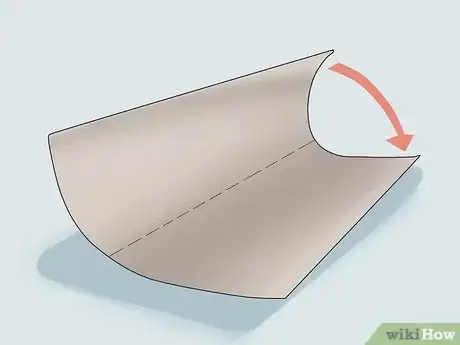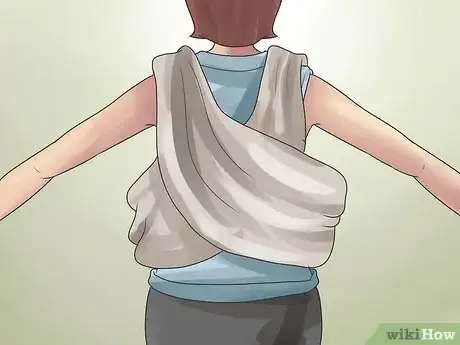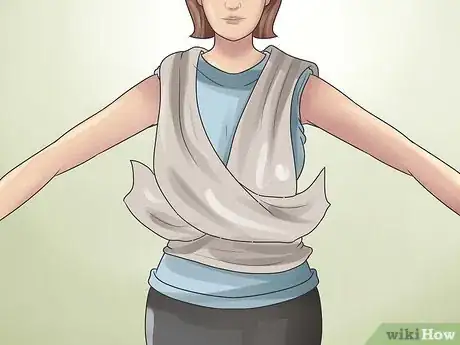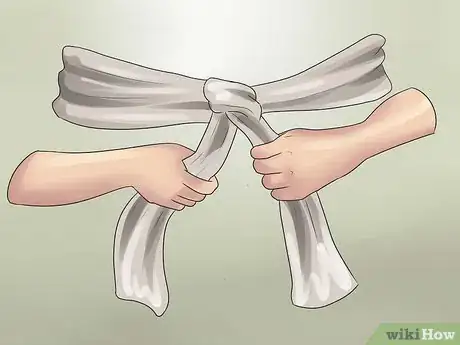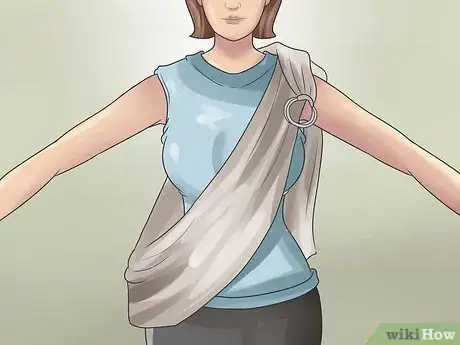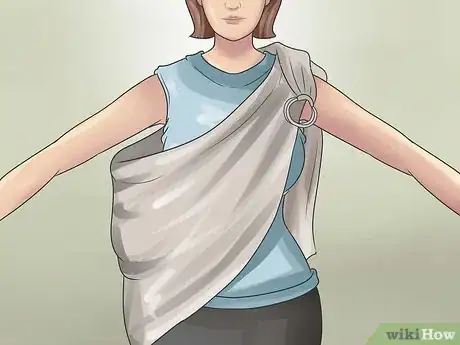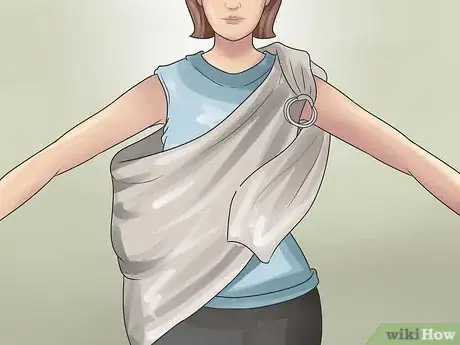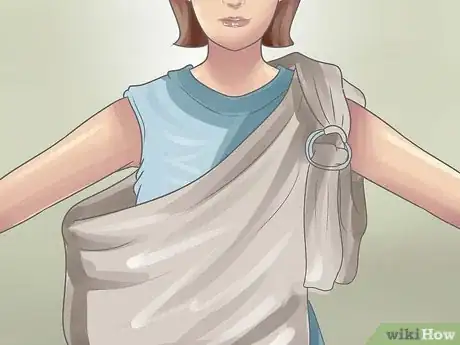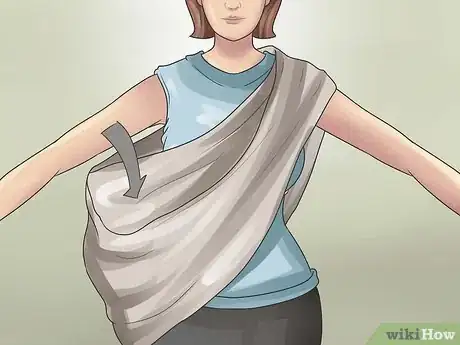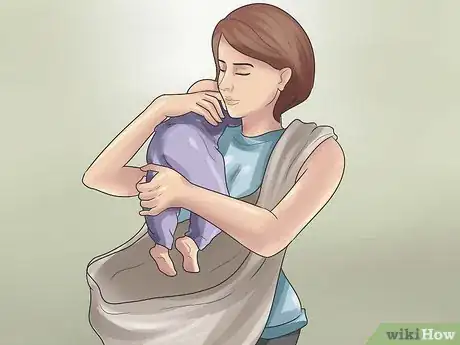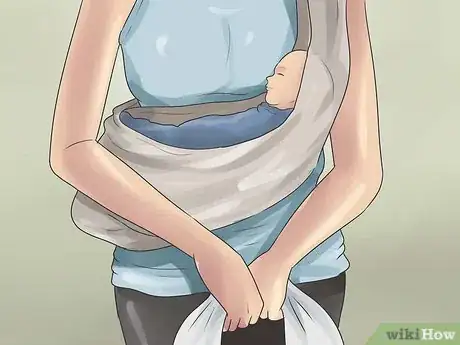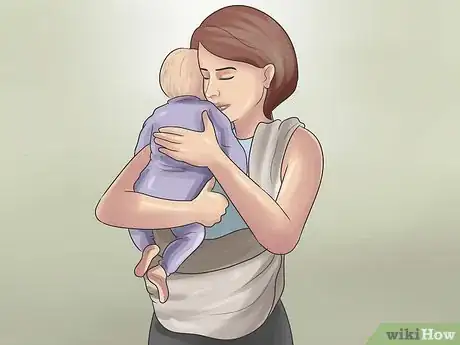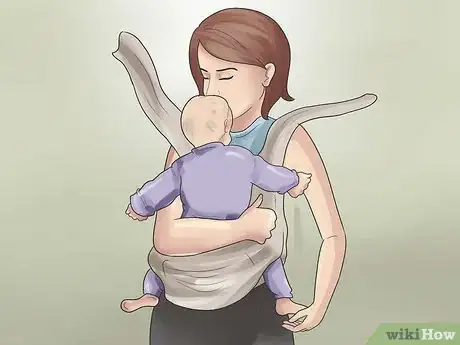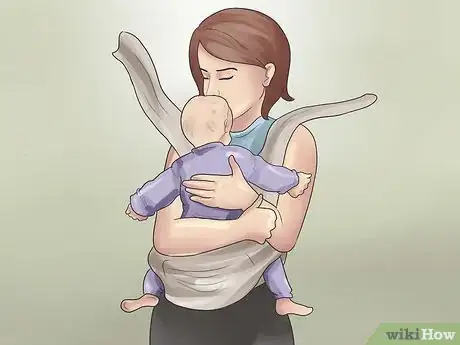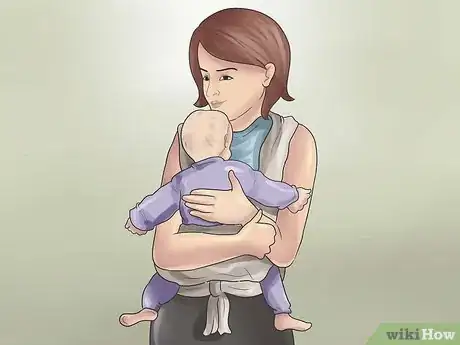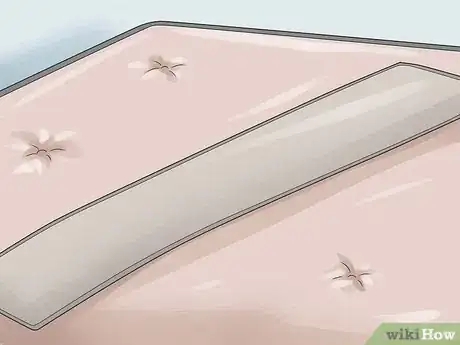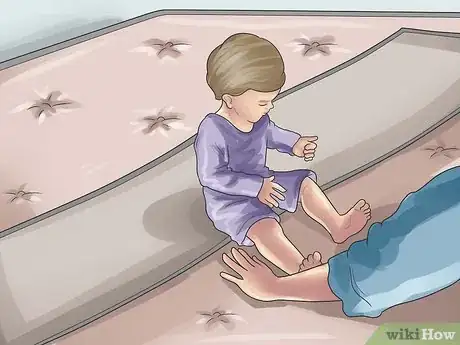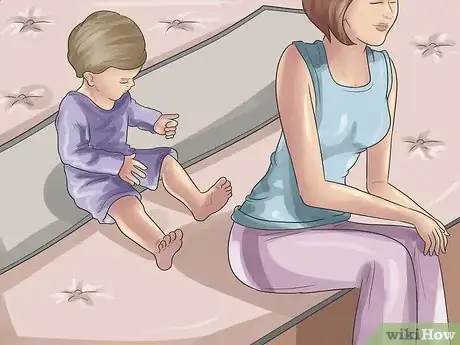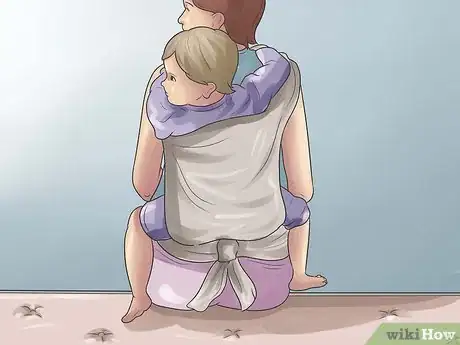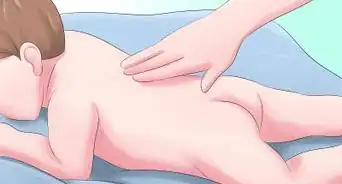wikiHow is a “wiki,” similar to Wikipedia, which means that many of our articles are co-written by multiple authors. To create this article, volunteer authors worked to edit and improve it over time.
This article has been viewed 44,981 times.
Learn more...
Using a sling can have many benefits, both for you and for your baby. Wearing your baby in a sling keeps your hands free, making it more convenient for you to handle your usual household tasks. At the same time, slings promote close bonding between you and your baby; you will become more attuned to the baby’s moods, attitudes, and movements. So what are you waiting for? Purchase a wrap-style sling that suits your height and the build of your body, and then start with Step 1!
Steps
Learning the Basic Wrap for a Sling without Rings
-
1Fold your sling. Before you can master the different methods for wrapping your baby in a sling, you need to learn how to fold and secure the sling itself. If your sling does not have rings, you’ll cross the fabric and secure it with a knot. To begin, fold the entire length of the fabric so that it isn’t as wide.
- Do not twist the sling. You want it smooth and even.
-
2Wrap the sling against your stomach. Take the folded fabric and wrap it against your stomach. Check the placement – you want the middle of the fabric to be hugging your stomach.[1]Advertisement
-
3Criss-cross the sling around your back. Bring the ends of the fabric, criss-crossed, around your back, so that the crossed ends come over your shoulders and hang over your chest.[2]
-
4Criss-cross the sling around your front. Take the ends of the fabric hanging over your chest and cross them again, tucking each end under and through the fabric on your waist.
-
5Wrap the sling around your back again. Bring the ends of the fabric around your back again.
- Note that if your fabric is still too long, you can repeat this process, bringing the sling around your front and back until it’s a good length to tie in a knot.
-
6Secure the sling with a knot. Tie the ends together in a knot, and smooth out any crumples and creases.
Learning the Basic Wrap for a Sling with Rings
-
1Position the sling. If your sling has rings, the process for setting it up is a bit different. First, put the side of the sling with the rings along the shoulder opposite to the hip or arm you typically use to carry your child. In other words, if you usually carry your baby on your right side, then set the rings on your left shoulder. Let the part of the sling without rings fall freely down your back.[3]
-
2Open your sling. Spread the sling out completely.
-
3Bring the sling under your arm. Take the end of the sling without rings, which has fallen down your back, and bring it to your front by passing it under your arm. Spread the sling again.[4]
- Make sure, at this point, that the sling isn’t twisted on your back.
-
4Pass the end of the sling through both rings. Grasp the end of the sling and wrinkle it so that it will fit, then pass it through both rings.
- Note that these rings are functional; you can customize the size of the sling to fit your child’s age and size.
-
5Secure the sling. Bring the end of the sling back over the top ring and down through the bottom ring. Check to see that you can tighten it by pulling on the end.
- Once the sling is secured, you don’t have to untie it. You can simply remove it as is, hang it up, and, when you wear it again, adjust the size as needed.
Using a Cradle Hold Position
-
1Open your sling. For newborns and babies up to a year old, the cradle hold position works well. Starting with the basic wrap, you’ll have two layers of fabric across your chest. Pull on one layer, and it will open like a pouch.[5]
-
2Put your baby’s feet in the sling. Hold your baby against your shoulder, lean back a little, and slip his or her feet in the sling, toward your midsection.
-
3Position your baby. Turn your baby so that his or her arm and side are resting against your body; then, slowly lower your baby’s bottom on the pouch.[6]
- Make sure that your baby is facing the opening of the pouch.
-
4Finish the wrap. Take the fabric around your waist and pull it over your baby’s body.
Using a Chest-to-Chest or Back-to-Chest Position
-
1Get in position. Starting with the basic wrap, hold your baby against your chest, either facing you (for the chest-to-chest position) or facing out (for the back-to-chest position).
-
2Position your baby’s feet. Pull on the fabric across your shoulder and slip one of your baby’s feet on one side of the fabric and the other on the opposite side.[7]
-
3Tuck your baby’s legs. Carefully tuck your baby’s legs under the fabric that’s wrapped around your waist.
-
4Secure your baby. Pull on the fabric around your waist and stretch it up to your baby’s neck, making sure to keep the fabric under your baby’s bottom.[8]
Using a Back-Carry Position
-
1Lay your wrap on a flat surface. This position should be used only for toddlers. If your baby is over a year old and mobile, start by placing your sling on a bed or other flat surface.
-
2Position your baby. Place your baby on the sling. Make sure that the width of the sling is spread from his or her knees to his or her armpits.
-
3Put your baby on your back. Sit in front of your baby’s feet, facing away. Reach for both ends of the fabric, and pull them toward you, bring your baby against your back like a backpack.[9]
-
4Position the sling. Pull both ends of the fabric up and over your shoulders, then across your chest and around your midsection.[10]
-
5Secure the sling. Bring the ends of the fabric to your back. Secure it with a knot under your baby’s bottom.
Warnings
- Your baby’s safety should be your top priority. Monitor your baby carefully, and always read the manufacturer’s instructions on your sling. Don’t perform any intense exercise or activity while wearing your baby.⧼thumbs_response⧽
References
- ↑ https://www.youtube.com/watch?v=N1pOH5iGr9M
- ↑ https://www.youtube.com/watch?v=N1pOH5iGr9M
- ↑ https://www.youtube.com/watch?v=N0SSYYLogNs
- ↑ https://www.youtube.com/watch?v=N0SSYYLogNs
- ↑ https://www.askdrsears.com/topics/health-concerns/fussy-baby/baby-wearing/different-holds-babysling
- ↑ https://www.askdrsears.com/topics/health-concerns/fussy-baby/baby-wearing/different-holds-babysling
- ↑ https://www.askdrsears.com/topics/health-concerns/fussy-baby/baby-wearing/different-holds-babysling
- ↑ https://www.carryingmatters.co.uk/ring-sling-photo-tutorial/
- ↑ https://www.youtube.com/watch?v=E52N6kRwE_k&list=PLIqcyORjiqIeX7ehTrP1XWv6xzdnFV9rh&index=10&t=0s
